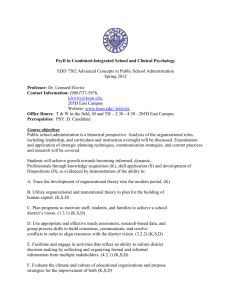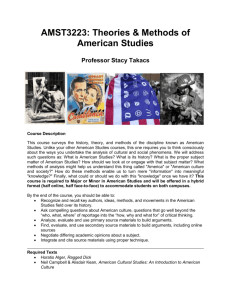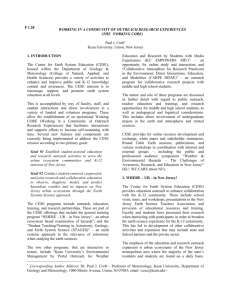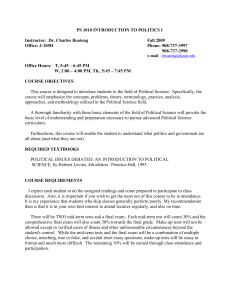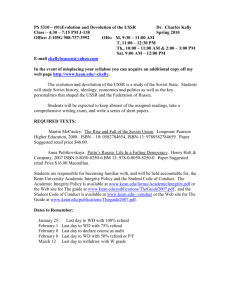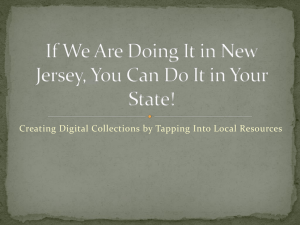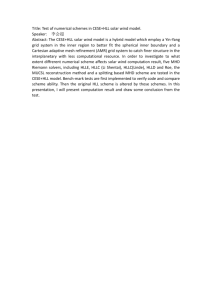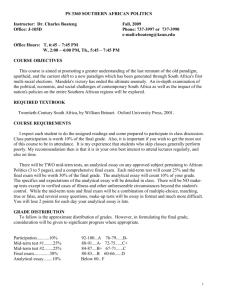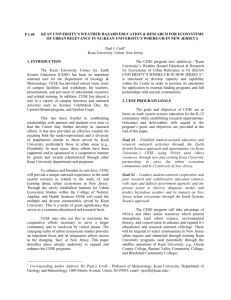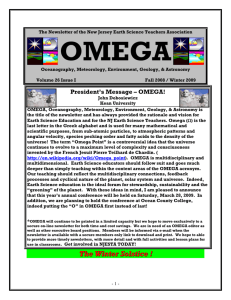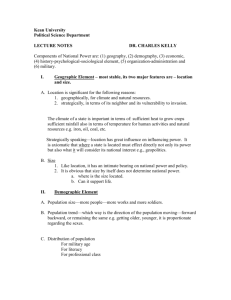Printable CESE Brochure - Darren Milliron
advertisement
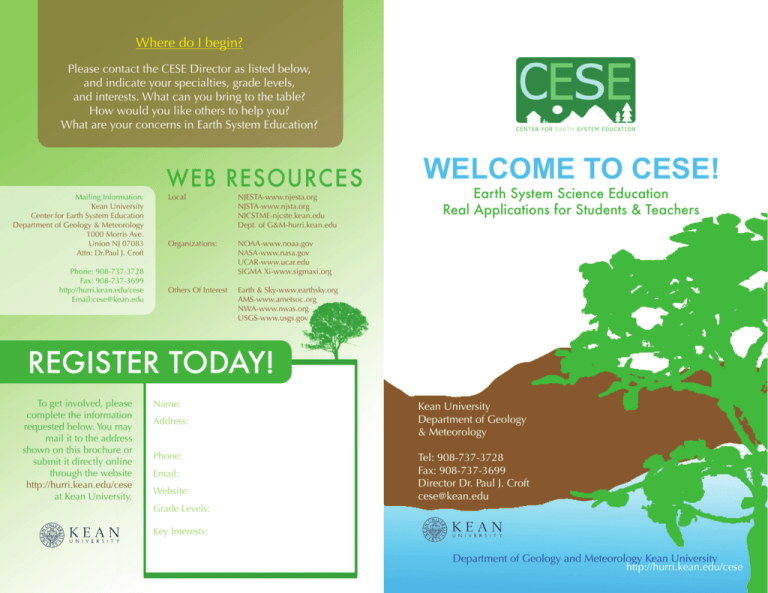
Where do I begin? Please contact the CESE Director as listed below, and indicate your specialties, grade levels, and interests. What can you bring to the table? How would you like others to help you? What are your concerns in Earth System Education? WELCOME TO CESE! WEB RESOURCES Mailing Information: Local Kean University Center for Earth System Education Department of Geology & Meteorology 1000 Morris Ave. Union NJ 07083 Organizations: Attn: Dr.Paul J. Croft Phone: 908-737-3728 Fax: 908-737-3699 http://hurri.kean.edu/cese Others Of Interest Email:cese@kean.edu Earth System Science Education Real Applications for Students & Teachers NJESTA-www.njesta.org NJSTA-www.njsta.org NJCSTME-njcste.kean.edu Dept. of G&M-hurri.kean.edu NOAA-www.noaa.gov NASA-www.nasa.gov UCAR-www.ucar.edu SIGMA Xi-www.sigmaxi.org Earth & Sky-www.earthsky.org AMS-www.ametsoc.org NWA-www.nwas.org USGS-www.usgs.gov REGISTER TODAY! To get involved, please complete the information requested below. You may mail it to the address shown on this brochure or submit it directly online through the website http://hurri.kean.edu/cese at Kean University. Name: Address: Phone: Email: Website: Kean University Department of Geology & Meteorology Tel: 908-737-3728 Fax: 908-737-3699 Director Dr. Paul J. Croft cese@kean.edu Grade Levels: Key Interests: Department of Geology and Meteorology Kean University http://hurri.kean.edu/cese CESEMission THE The mission of the Center for Earth System Education at Kean University is to encourage, support, and promote earth system education at all levels. The earth system, comprised of both natural and human components, constitutes our world and determines the nature of our interactions and mutual impacts every day. CESE Purpose To earth scientists, learners, and teachers these components include the land (or lithosphere), the water (or hydrosphere), and the air (or atmosphere). These are all interactive and dependent upon one another, as well as the biosphere. The biosphere includes plants, animals and human populations worldwide. All are ultimately governed by the Earth’s astronomical behaviors. These components must be understood in terms of their properties, behaviors, processes, and interactions; particularly with people in all settings (urban, rural, and marine). To accomplish this, scientists must observe, diagnose, and model each component of the system so that impacts may be avoided, mitigated or prevented. This suggests that everyone must know about the full geosphere, care about its impacts, and be prepared to act. The best manner to achieve this synthesis is through Earth System Education. Using relevant pedagogy and select teaching methods, as well as careful and targeted use of technology, teachers may help students truly understand the science that affects them everyday. Please contact Dr. Paul Croft for further information about the Center for Earth System Education, its resources, and its programs in support of earth system and earth science education. The Center is located in the Science Bldg, 3rd floor on the Kean University Campus. The various means of contact are phone: 908-737-3728, fax: 908-737-3699, E-mail cese@kean.edu, and the website: http://hurri.kean.edu HOW DO YOU FIT Getting Started The CESE program integrates NOAA, NASA, USGS, EPA, and other educational materials, including real time weather, hydrologic, geologic, and astronomical data and information into its operations. Initiatives The CESE program focuses on three iniatives that began during the 2007-2008 academic year. These include workshops, stakeholder meetings, and educational training through the following modes: Round Table Earth An opportunity to meet and share with your colleagues and others to understand the role of people in the geosphere. This program’s focus is “Wonders and Hazards to Observe by You!” (WHO?-YOU!) and involves guest speakers and focal point contacts. Teacher Workshops The focus is on the development and delivery of a hazardous weather (and other) impacts program with curricular guidance for teachers as related to urban ecosystems in New Jersey. These include awareness, safety, and content materials. Educational Sessions and Research These sessions provide specific training, the identification of class and research projects, and an opportunity for collaborative and cooperative efforts, determinaion of educational and stakeholder needs, and establishment of exchange and partnering activities. How may I help? What can I do? How should we act? Plan ahead now to be an active participant as we define the appropriate efforts that will help you most in teaching your students. Involve yourself in the initiation of student research partnerships between your students and university undergraduates. Make a difference by considering needs and pedagogy as well as resources in a holistic manner to best serve your students, your district, and others. into this PICTURE? M f Geology Hydrology e Meteorology x Astronomy
